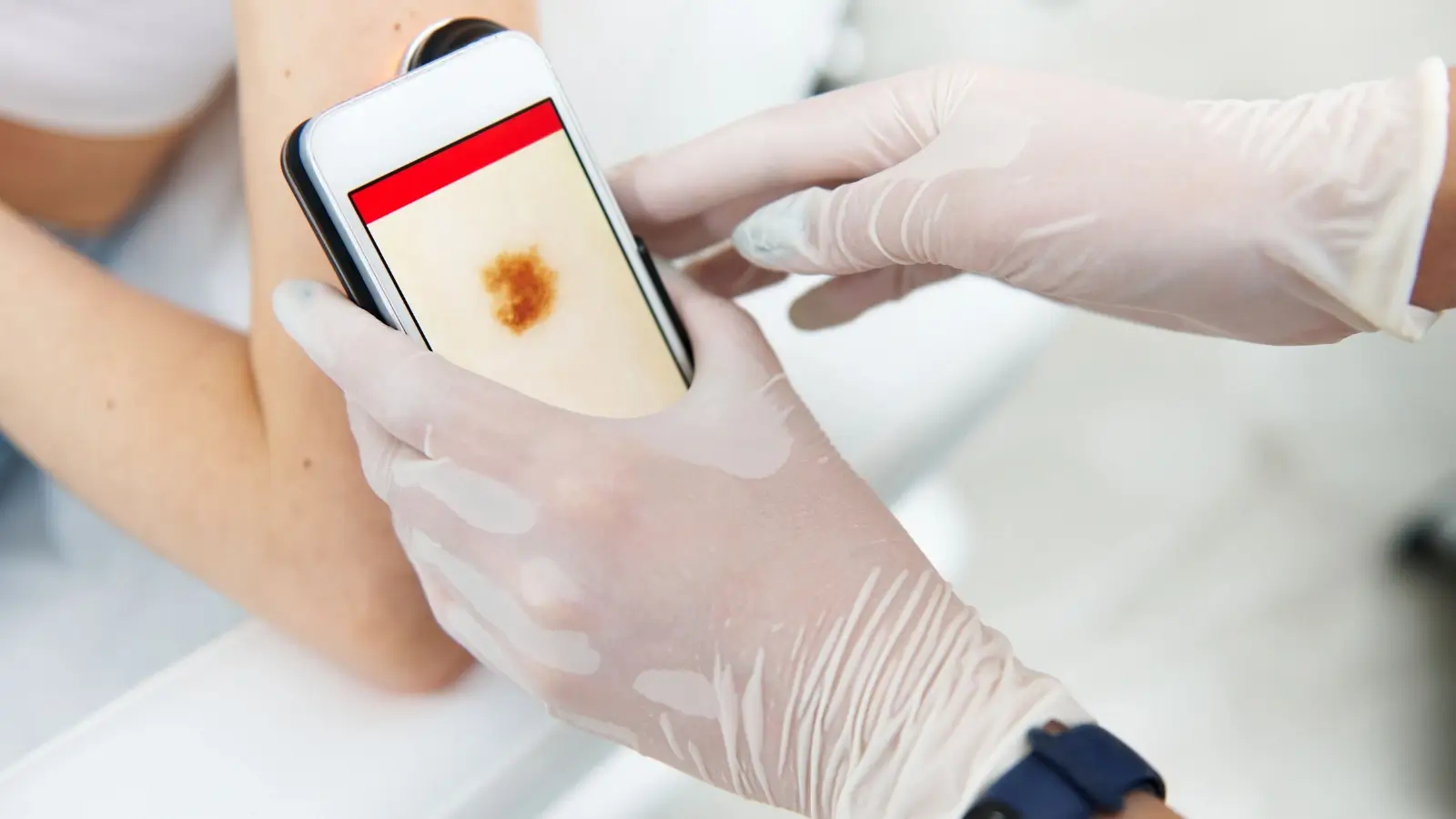


You've probably seen them advertised on social media: sleek apps promising to analyze that suspicious mole on your arm using nothing more than your smartphone camera. With names like SkinVision, Miiskin, and MoleScope, these ai skin cancer detection app options seem like the perfect solution for anyone who's ever stared at a freckle and wondered, "Should I be worried about this?"
The appeal is undeniable. Instead of waiting weeks for a dermatology appointment (if you can even get one), you simply snap a photo, upload it, and receive instant feedback about whether that spot deserves medical attention. It's convenient, private, and often free or low-cost.
But here's the uncomfortable truth: your smartphone, no matter how many megapixels it boasts, isn't quite ready to replace trained medical professionals. While AI technology has made remarkable strides in recent years, significant limitations remain when it comes to detecting skin cancer through photos alone.
Modern smartphones capture incredibly detailed images. The latest iPhone can shoot in 4K resolution, and Samsung's Galaxy series offers macro photography capabilities that would have impressed professional photographers just a decade ago. So why can't these powerful devices reliably spot melanoma?
The answer lies in what dermatologists actually do during skin examinations. When a trained professional examines a suspicious lesion, they're not just looking at its appearance. They're feeling its texture, assessing how it sits relative to surrounding skin, and considering factors like your family history, age, and skin type. They might use specialized tools like dermatoscopes, which provide magnified, illuminated views that reveal details invisible to the naked eye.
An ai skin cancer detection app, meanwhile, has access to only a single photograph. That image might be taken under poor lighting, from an awkward angle, or with camera settings that don't accurately represent the lesion's true colors. The app can't feel whether a mole is raised or flat, rough or smooth. It can't ask about changes you've noticed over time.
Research has revealed several concerning patterns in how AI-powered skin analysis performs in real-world conditions:
Lighting makes a huge difference. The same mole photographed under fluorescent bathroom lighting versus natural sunlight can appear dramatically different. AI algorithms trained on professionally captured medical images often struggle with the inconsistent lighting conditions of smartphone photos.
Context matters more than you'd think. Dermatologists consider the location of a lesion when making assessments. A dark spot on sun-exposed skin carries different implications than an identical spot in an area typically covered by clothing. Most consumer apps lack this contextual understanding.
The "ugly duckling" principle is hard to code. Experienced dermatologists often identify concerning lesions not because they meet specific criteria, but because they look different from a patient's other moles. This pattern recognition—spotting the mole that stands out from the crowd—remains challenging for AI systems.
False confidence can be dangerous. Perhaps most concerning, some studies have found that people who receive "low risk" assessments from skin analysis apps become less likely to seek professional evaluation, even when they have genuine concerns about changes in their skin.
This doesn't mean ai skin cancer detection app technology is entirely without merit. These tools can serve valuable purposes when used appropriately:
The key is understanding these applications as supplements to professional care, not replacements for it.
Dr. Jennifer Chen, a dermatologist at Stanford University, puts it bluntly: "I've never seen an app that I would trust with my own skin." Her concern isn't just about diagnostic accuracy—it's about the false sense of security that negative results can provide.
Professional dermatologists undergo years of specialized training to develop pattern recognition skills that current AI simply cannot match. They learn to spot subtle variations in color, texture, and growth patterns that might indicate malignancy. More importantly, they understand when something doesn't look right, even if it doesn't fit textbook descriptions of skin cancer.
The human element extends beyond diagnosis. A dermatologist can discuss your individual risk factors, recommend appropriate screening intervals, and provide personalized advice about sun protection and skin care. They can also identify non-cancerous conditions that might still require treatment or monitoring.
None of this means AI has no place in skin cancer detection. Research laboratories and medical institutions are developing increasingly sophisticated systems that show real promise. However, these advanced systems differ significantly from consumer smartphone apps.
Medical-grade AI systems typically:
Some hospitals and clinics are beginning to integrate AI tools as diagnostic aids, helping dermatologists identify potentially concerning lesions more efficiently. These applications represent the technology's true potential—enhancing human expertise rather than attempting to replace it.
So where does this leave you as someone concerned about skin cancer? The most effective approach combines the best of technology with professional medical care:
Use apps thoughtfully. If you choose to try an ai skin cancer detection app, treat it as a documentation tool rather than a diagnostic one. Take regular photos of your moles to track changes over time, but don't rely on the app's assessment for peace of mind.
Know when to see a professional. Schedule regular skin checks with a dermatologist, especially if you have risk factors like fair skin, family history of skin cancer, or a history of significant sun exposure. Don't wait for an app to tell you something looks concerning.
Practice good sun protection. The most effective skin cancer prevention remains decidedly low-tech: sunscreen, protective clothing, and avoiding peak UV hours.
Trust your instincts. If something about your skin concerns you—whether it's a new mole, a spot that's changed, or just a nagging feeling that something isn't right—seek professional evaluation. Your intuition about your own body often picks up on changes that both AI and casual observation might miss.
Smartphone-based skin analysis represents an impressive technological achievement, but it's not yet ready for the responsibility we'd like to place on it. Current ai skin cancer detection app options work best as tools for awareness and documentation rather than definitive screening instruments.
Your phone might be smart enough to recognize your face, translate foreign languages, and navigate you across town, but detecting skin cancer requires a level of nuanced medical judgment that current technology simply cannot provide. Until AI systems can match the comprehensive assessment abilities of trained dermatologists, your best bet remains scheduling that appointment you've been putting off.
The future will likely bring more sophisticated AI tools that can genuinely assist in skin cancer detection. For now, though, the most reliable technology for protecting your skin health remains decidedly analog: regular professional checkups, careful self-examination, and that sunscreen you keep forgetting to reapply.